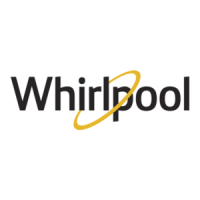
Do you have a question about the Whirlpool NU40T62-403 and is the answer not in the manual?
| Brand | Whirlpool |
|---|---|
| Model | NU40T62-403 |
| Type | Electric |
| Fuel Type | Electric |
| Capacity | 40 gallons |
| Voltage | 240 V |
| Wattage | 4500 W |
| Energy Factor | 0.92 |
| Weight | 120 lbs |
| Warranty | 6 years |
Instructions to follow if a gas leak is detected, emphasizing safety precautions and contact procedures.
Explains the safety alert symbol and the meaning of DANGER and WARNING labels.
Critical instructions regarding submerged appliances, hydrogen gas, and California Proposition 65 compliance.
Highlights the sensitivity of new technology to installation errors and the need to follow checklists.
Outlines the owner's duties for installation, operation, and maintenance, including safety.
Instructions for unpacking the water heater, inspecting for damage, and handling heavy weight.
Warns against storing or using flammable liquids and vapors near the water heater.
Specifies where the water heater can and cannot be installed, including mobile homes and general site selection.
Details requirements for drain pans and placement to prevent water damage.
Specifies minimum clearances from combustible surfaces for inspection and service.
Mandates bracing, anchoring, or strapping for earthquake safety in California.
Ensures the water heater is compatible with the available gas type (Natural or LP).
Provides instructions for installing gas piping, including shut-off valves, drip legs, and leak testing.
Details gas pressure requirements, testing procedures, and the use of gas detectors.
Explains the need for adequate combustion air and the avoidance of corrosive atmospheres.
Provides tables for sizing natural gas and LP gas pipe based on capacity and length.
Details air volume needs for unconfined installation areas and provides a table for sizing.
Outlines requirements for confined spaces, including two permanent openings.
Describes how to provide outdoor air via ducts or direct openings, with sizing tables.
Instructions for correctly installing the draft hood assembly.
Guidelines for selecting vent pipe size and installing connectors, including clearance requirements.
Procedures for connecting the vent to a chimney, ensuring it's clear and properly sealed.
Guidelines for installing vertical gas vents, including termination and support.
Covers pipe material, pressure, unions, mixing valves, and shut-off valves for water supply.
Details the installation of the T&P relief valve and its discharge line.
Specifies approved piping materials and cautions against incompatible chemicals.
Explains the risks of thermal expansion in closed systems and the need for an expansion tank.
Details the proper installation and function of the T&P relief valve and its discharge line.
Instructions for applying insulation to the T&P relief valve and associated piping.
Guidelines for using the water heater in systems that supply both space heating and domestic hot water.
Considerations for using the water heater with solar heating systems, including temperature limits.
A checklist to verify proper water heater placement and environmental conditions.
Ensures adequate air supply for combustion and proper ventilation.
Verifies correct installation and functionality of the vent pipe system.
Checks for proper water piping installation, including relief valves and connections.
Confirms correct gas type, shut-off valves, and leak-free connections.
Crucial safety warnings and instructions to follow before attempting to light the pilot.
Step-by-step guide for safely lighting the pilot light using the igniter system.
Information specific to Liquefied Petroleum Gas models, including safety precautions.
Procedure to ensure proper draft for safe combustion and ventilation.
Visual guide to identifying a properly operating burner flame.
Instructions on adjusting the thermostat to prevent scalding and manage energy use.
Table detailing burn times at various water temperatures for safety awareness.
Explains normal and diagnostic flash codes from the status light for troubleshooting.
Describes Standard and Vacation modes for managing water temperature and energy.
Explains normal operational sounds and condensation, recommending drain pans.
Details automatic safety shut-off mechanisms for pilot loss, overheat, and flammable vapors.
Information on the anode rod's role in corrosion protection and causes of water odor.
Procedure for draining and flushing the tank to remove sediment.
Annual inspection checklist for vent system, burners, piping, and installation area.
Instructions for manually operating the T&P relief valve to ensure functionality.
Information required when ordering replacement parts, including item numbers and descriptions.
Step-by-step guide to safely remove the manifold assembly.
Instructions for removing the burner from the manifold assembly for cleaning or replacement.
Detailed steps for replacing the pilot and thermopile assembly.
Instructions for installing and periodically cleaning the air filter.
Guidance on inspecting and cleaning the flame-trap to ensure proper airflow.
Procedures for cleaning the combustion chamber and flame-trap.
Steps for replacing the manifold assembly, including gasket and viewport checks.
Guidance on testing the igniter system for spark generation.
Detailed instructions for removing and replacing the gas control valve/thermostat.
Operational checklist for the Flame Lock Safety System components.
Addresses common problems like ignition failure, smelly water, and lazy burner flames.
Covers common problems like high operating costs, insufficient hot water, and condensation.
Explains diagnostic codes indicated by the status light for troubleshooting.
A step-by-step guide to diagnose and resolve pilot light issues.
Information needed when ordering replacement parts, including item numbers and descriptions.
A list of available repair parts with corresponding item numbers and a legend for special parts.
Visual diagrams of various parts kits for identification and ordering.





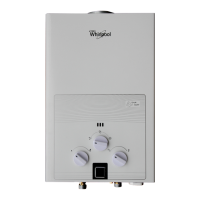
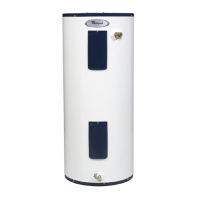

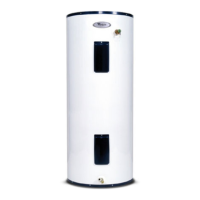
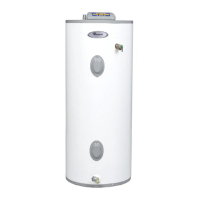
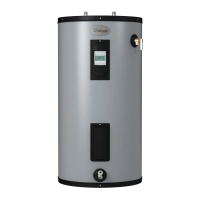
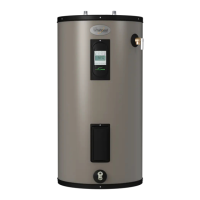
